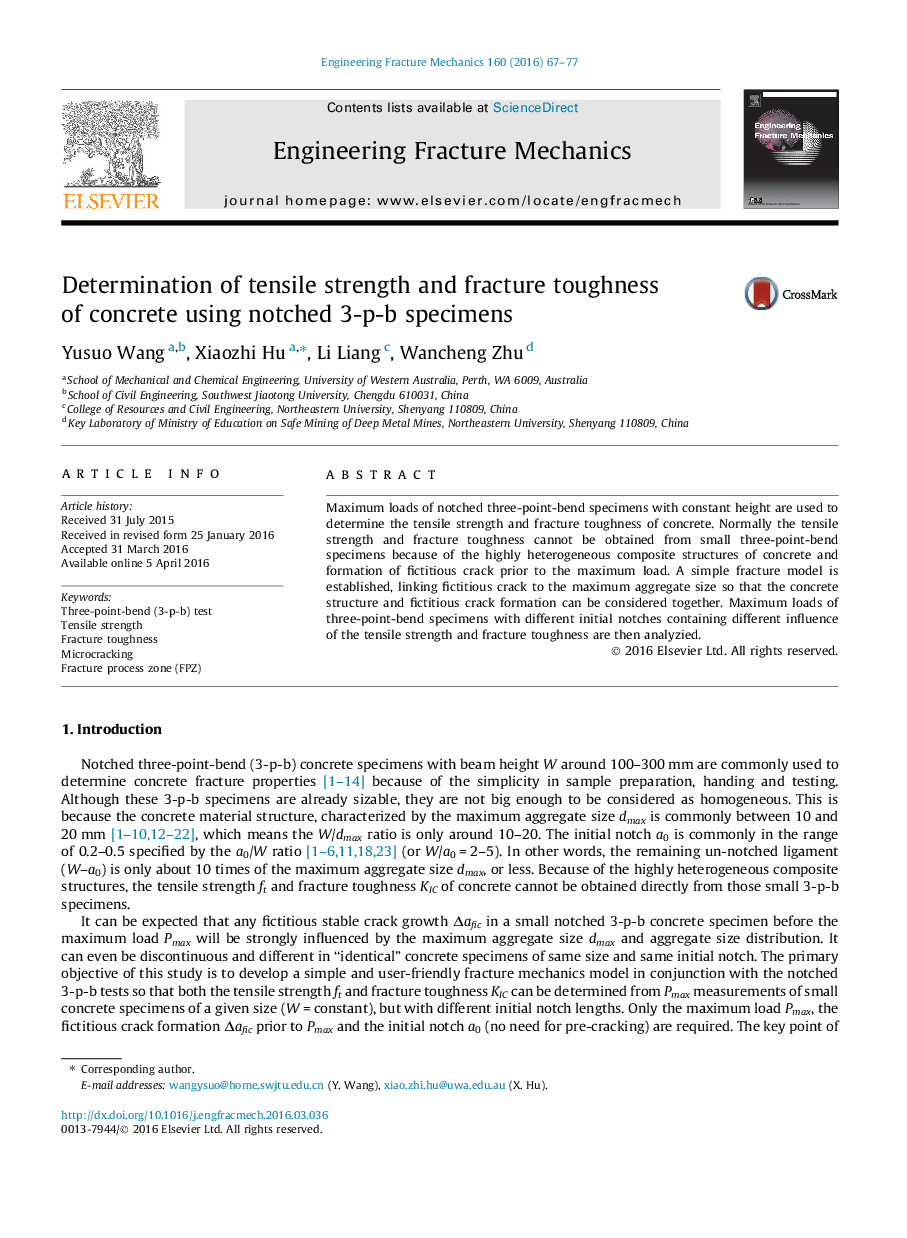| Article ID | Journal | Published Year | Pages | File Type |
|---|---|---|---|---|
| 770311 | Engineering Fracture Mechanics | 2016 | 11 Pages |
•Simple method to determine strength & toughness using notched 3-p-b samples.•Stable crack growth before peak load, together with the maximum aggregate, is considered.•Strength & toughness determined compare well with literature data.•Strength & toughness are used to predict critical loads of other 3-p-b samples.•The fracture model is consistent with ASTM standard on fracture toughness.
Maximum loads of notched three-point-bend specimens with constant height are used to determine the tensile strength and fracture toughness of concrete. Normally the tensile strength and fracture toughness cannot be obtained from small three-point-bend specimens because of the highly heterogeneous composite structures of concrete and formation of fictitious crack prior to the maximum load. A simple fracture model is established, linking fictitious crack to the maximum aggregate size so that the concrete structure and fictitious crack formation can be considered together. Maximum loads of three-point-bend specimens with different initial notches containing different influence of the tensile strength and fracture toughness are then analyzied.
